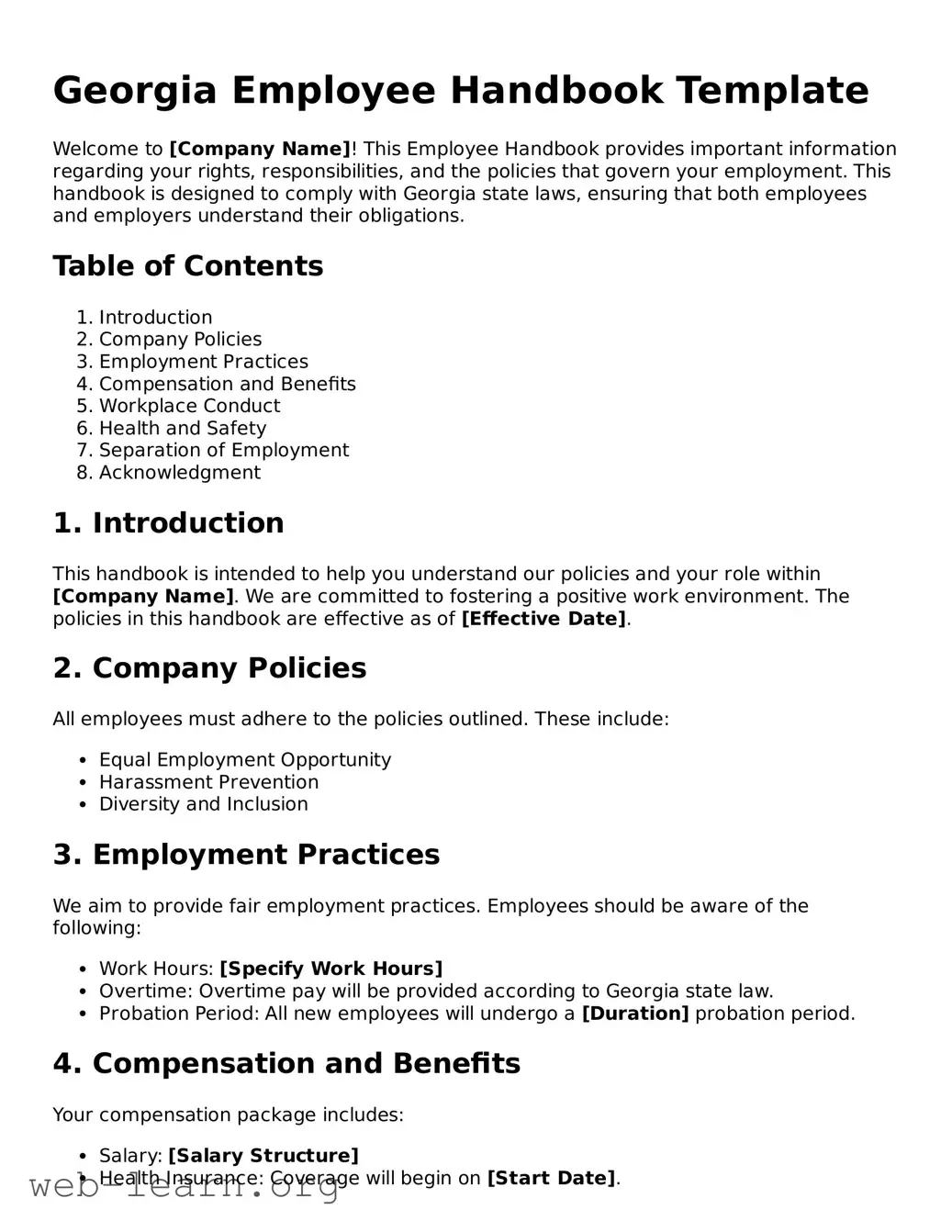Georgia Employee Handbook Template
Welcome to [Company Name]! This Employee Handbook provides important information regarding your rights, responsibilities, and the policies that govern your employment. This handbook is designed to comply with Georgia state laws, ensuring that both employees and employers understand their obligations.
Table of Contents
- Introduction
- Company Policies
- Employment Practices
- Compensation and Benefits
- Workplace Conduct
- Health and Safety
- Separation of Employment
- Acknowledgment
1. Introduction
This handbook is intended to help you understand our policies and your role within [Company Name]. We are committed to fostering a positive work environment. The policies in this handbook are effective as of [Effective Date].
2. Company Policies
All employees must adhere to the policies outlined. These include:
- Equal Employment Opportunity
- Harassment Prevention
- Diversity and Inclusion
3. Employment Practices
We aim to provide fair employment practices. Employees should be aware of the following:
- Work Hours: [Specify Work Hours]
- Overtime: Overtime pay will be provided according to Georgia state law.
- Probation Period: All new employees will undergo a [Duration] probation period.
4. Compensation and Benefits
Your compensation package includes:
- Salary: [Salary Structure]
- Health Insurance: Coverage will begin on [Start Date].
- Retirement Plans: Employees are eligible for [Type of Retirement Plan].
5. Workplace Conduct
Maintaining a professional workplace is crucial. Expected behavior includes:
- Respectful communication with colleagues and clients.
- Compliance with safety regulations.
- Adherence to punctuality standards.
6. Health and Safety
The safety of all employees is paramount. Please remember to:
- Report any unsafe conditions immediately.
- Participate in safety training sessions.
- Comply with all safety protocols.
7. Separation of Employment
When separation occurs, either voluntary or involuntary, the following applies:
- Notice Period: Employees should provide at least [Notice Period] notice.
- Exit Interviews: Exit interviews will be conducted to gather feedback.
- Final Paychecks: Employees will receive their final paycheck on the next scheduled payday.
8. Acknowledgment
Please sign below to acknowledge receipt and understanding of this Employee Handbook.
Employee Name: [Employee Name]
Date: [Date]
